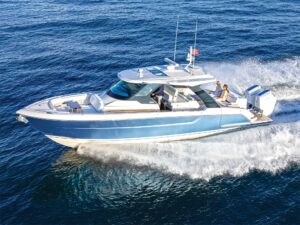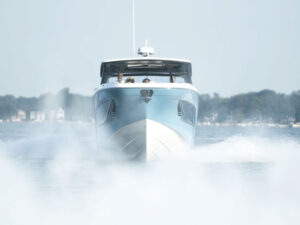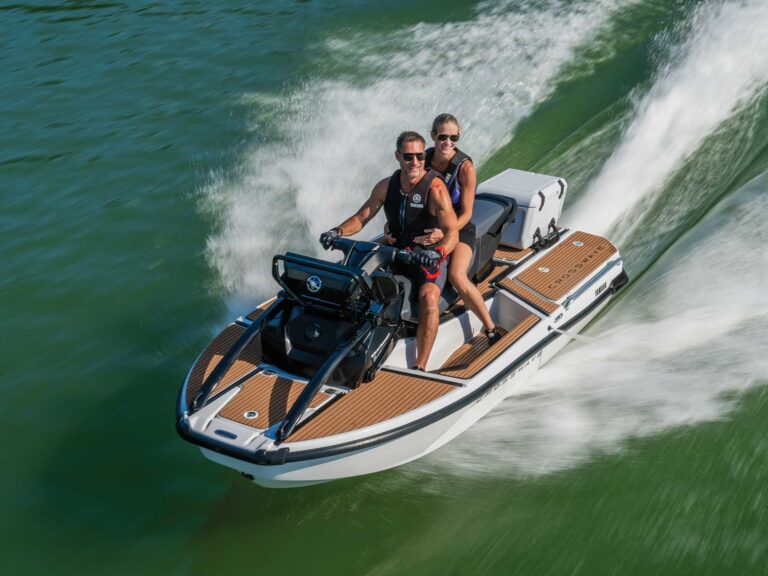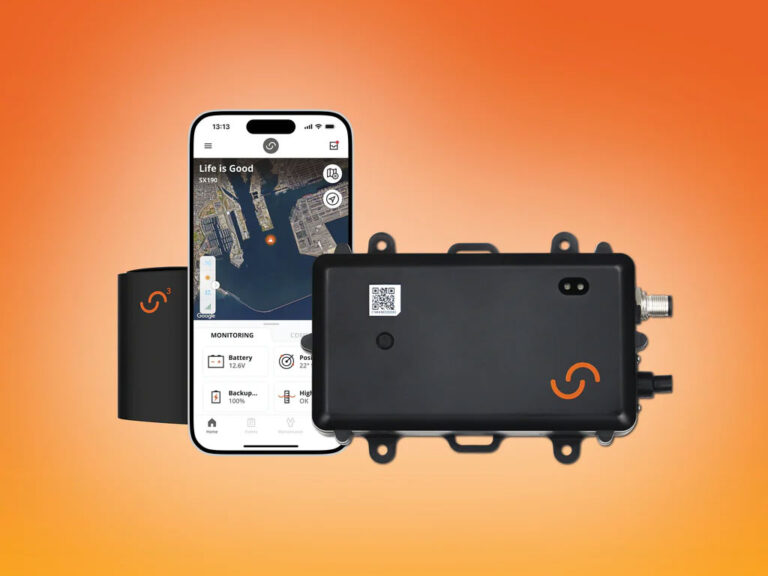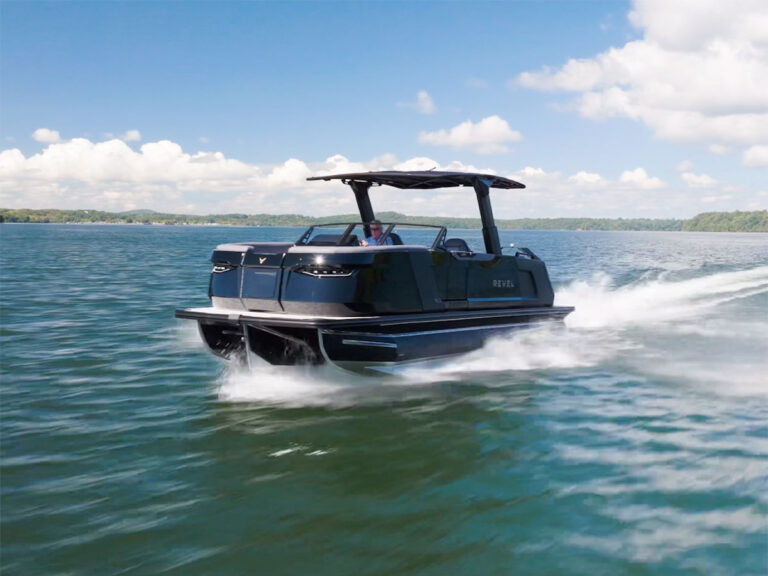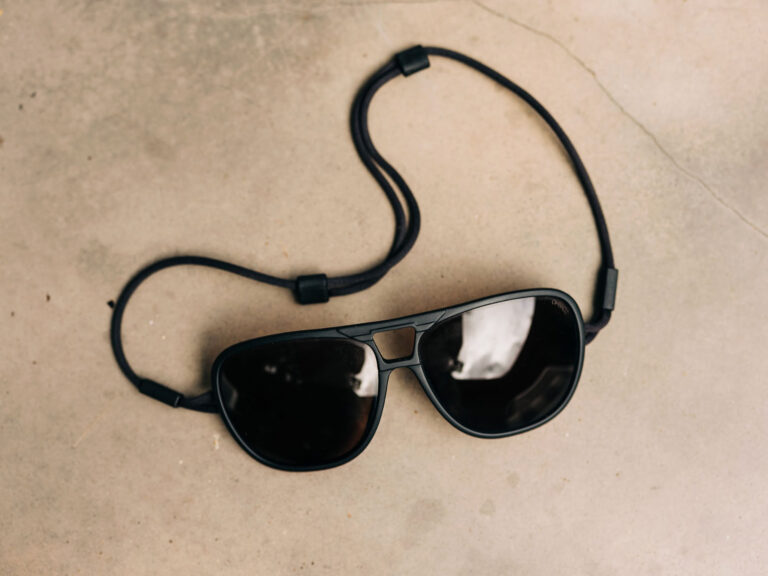
Anchoring the boat is one of the most intimidating skills to learn for a boat operator. Securing a heavy boat with a rope, chain and anchor in strong current, heavy wind, and crushing waves presents the opportunity for catastrophic failure. A tangled chain, snagged rope or dragged anchor can quickly put the boat and crew in danger.
And retrieving the anchor presents even more dangers. Pulling the anchor free puts tons of pressure on both the anchor rope and boat. But mostly pulling in the anchor line puts a lot of pressure on bones and muscles.
Using an electric windlass anchor system to manage the rope, chain and anchor removes some of the work from the process, but doesn’t eliminate the potential for damage and injury. Learning how to use an electric windlass anchor system takes the intimidation out of anchoring the boat.
What Is an Electric Windlass?
An electric windlass anchor system consists of a motor that turns a wheel to retrieve and deploy the anchor line and chain, called the anchor rode. Unlike a winch, which uses a large drum to reel in line, the windless wheel grips the line and feeds it into an anchor-rode locker. The windless takes less space but a winch is stronger.
If used or installed incorrectly, a powerful motor turning a metal wheel at high speed under the pressure of a heavy anchor line is a recipe for disaster. But with some safety steps and an understanding of how the system works, a windlass can make boat anchoring significantly easier.

System Preparation
Like any mechanical device on a boat, the anchor, windlass and rode require regular maintenance and inspection. The anchor is handy for mooring the boat at sea, and essential for securing the boat if the motor loses power.
Before each trip, I check the anchor rode and electrical connections, and then test the windlass controls by running a few feet of rode through the gypsy. One of most common failure points is the anchor rope or chain jamming the anchor windlass jaws. Before operating the windlass anchor system, be sure the anchor rope isn’t tangled or snagged in the anchor locker.
Double check the chain stopper pin and windlass brake to keep the anchor rope from accidentally deploying. When I’m using the anchor windlass, I never leave it unattended. A small problem with an electric boat anchor system only takes a moment to turn into a big problem.
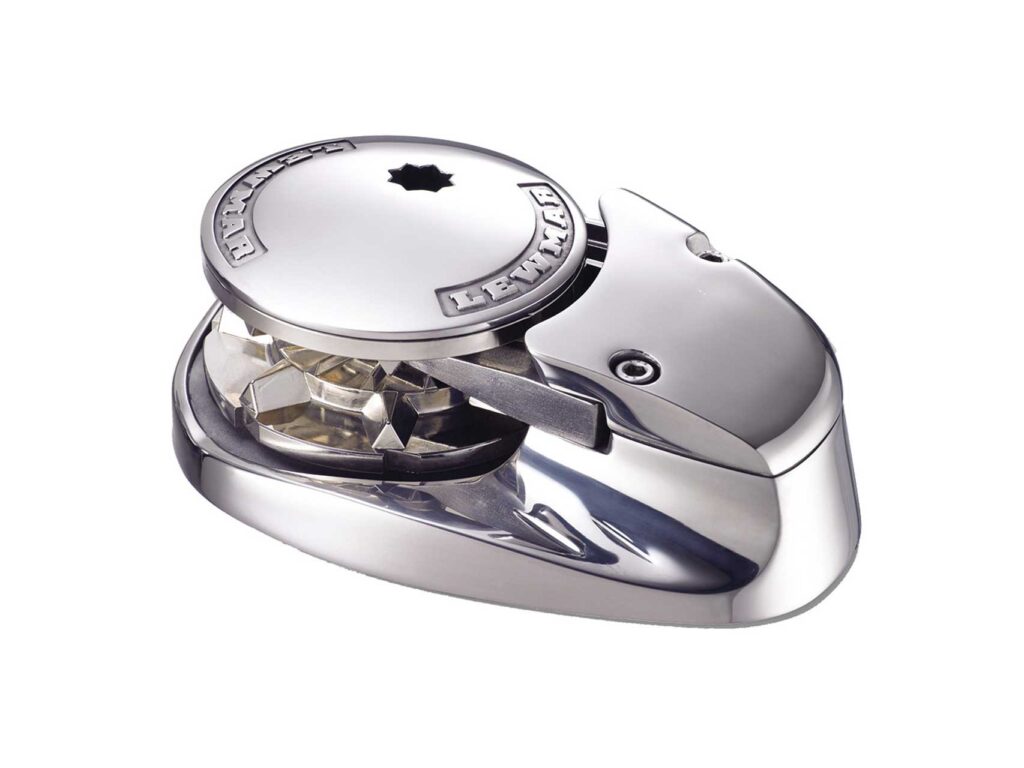
Deploying the Anchor
The first step to anchoring is selecting an appropriate location. Before releasing the anchor, check the area is clear of obstructions and other boats and away from navigation channels and hazards. Consider how the current and wind will affect the boat as it swings on the anchor. Then, check the fish finder and chart to determine the bottom composition and choose the correct type of anchor for soft mud, sand or rocks.
The key to safely deploying the anchor is checking the rope, chain and all connections. Frayed rope, rusty chain and faulty knots and links could cause a failure while deploying the anchor. If the anchor rode breaks while at anchor, the boat is set adrift out of control.
When using an electric windlass to deploy the anchor, it’s crucial to verify that the rope and chain move freely through the windlass and lie loosely in the anchor locker. Inspect the windlass for rope or chain that’s misaligned or pinched in the gypsy.
To deploy the anchor rope, unhook the chain stopper and use the anchor windlass controls to lower the chain and anchor rope. The best electric windlass anchor systems have control switches at the boat’s helm near the windlass. This allows the windlass operator to watch the line and control the windlass to prevent tangles and jams.
Some windlass systems have a free fall setting that allows the anchor to drop without resistance. This is a great feature for anglers looking to precisely anchor over structure. However, the free fall mode will not control the speed the rope moves through the windlass, making it even more important to observe the line and chain for potential tangles.
Once the anchor hits bottom, the rate the rope leaves the anchor locker slows down or goes slack. The formula for anchor scope is seven feet of line for every foot of depth. To properly hold bottom in 10 feet of water, the anchor requires 70 feet of scope. This formula varies depending on the type of anchor, bottom composition and the weather and water conditions. In heavy current and high wind over soft bottom, let out more line to ensure the anchor sticks securely.
Once the anchor is secure and the boat is sitting safely, tie the anchor rope to a bow cleat by wrapping the rope a full turn around the base of the cleat and then crossing the bitter end of the rope around the cleat horns. Never use the windlass brake to secure the rope. The weight of the boat and pressure of the current and wind could cause the rope to jam or slip.
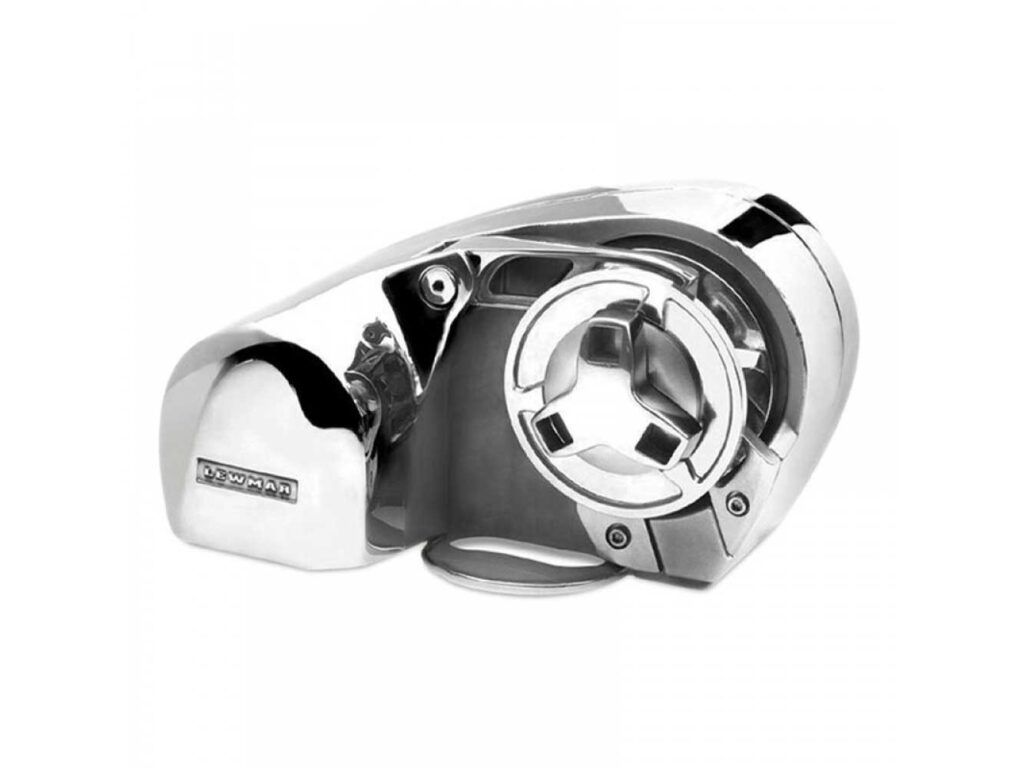
Retrieving the Anchor in Nine Steps
The windlass pays for itself when it’s time to retrieve the anchor. Instead of muscling the anchor rope into the boat, the windlass motor does the hard work. Just like deploying the anchor, the powerful motor and heavy anchor rope offer potential for damage or injury. Here are the steps you should follow to avoid any danger:
- Before untying the anchor rope from the bow cleat, start the boat motor. If the windlass motor fails or the rope jams or breaks, the motor controls the boat until the problem is solved.
- With one person at the windlass controls and another person at the helm, unwrap the rope from the cleat horns. I leave the rope wrapped around the cleat base to manually control the rope.
- Bump the boat into gear and motor ahead slowly. With pressure off the line, I unwrap the rope from the cleat and release it to move through the bow bow roller.
- Then, I use the windlass controls to retrieve the line. Maintain communication between the windlass operator and the boat operator. Move the boat ahead to feed line through the windlass. Never use the windlass to pull the boat or break free the anchor. If the anchor is stuck in the bottom, tie the rope off to the bow cleat and use the boat motor to pull the anchor free.
- Once the anchor is free of the bottom, take the boat out of gear or motor ahead very slowly and retrieve the rest of the line.
- While retrieving line, observe the line feeding into the anchor locker. Pile the line loosely in the anchor locker so it can dry and it is ready to redeploy.
- When the anchor chain reaches the windlass, slow the retrieve to ensure the rope to chain link passes through the windlass. If the splice sticks in the gypsy, deploy a few inches of rope and realign the chain in the gypsy.
- When the anchor reaches the surface of the water, slow the retrieve to allow the anchor to lodge in the bow roller without swinging and damaging the boat.
- To prevent the anchor from accidentally deploying, insert the locking pin through the chain and reverse the windlass a couple inches to take pressure off the mechanism.
Safety Considerations
Using a windlass makes anchoring easier but not simpler. The mechanism takes the work out of lowering and raising the anchor, but the power of the mechanism increases the risk of damage or injury. Always keep in mind that the windlass is a very powerful machine capable of crushing bones and ripping skin.
Here are some important tips to follow while using an electric windlass:
- Keep hands, feet, long hair and dangling clothes away from the spinning windlass gypsy. Also, keep away from the rope as it feeds through the windlass.
- If you need to clear rope in the anchor locker or free a jam in the windlass, stop the motor before moving in to work. The windlass operator needs to observe the rope and chain and control the speed of the windlass to maintain proper working pressure on the gypsy and keep the line and chain feeding smoothly through the windlass.
- Never allow the windlass brake to hold the boat on anchor or secure the anchor rope while underway. Always cleat off the anchor line while the anchor is deployed and be sure to pin the anchor chain while the boat is underway. The windlass brake is only designed to stop the rope and chain, if the brake fails, the anchor could deploy accidentally.
- Always insert the locking pin when the anchor is stowed and tie off the anchor rope when the anchor is deployed. And stay clear and alert when the windlass is operating.
- To keep the windlass running properly and further avoid damage or injury, follow the manufacturer’s recommendations for maintaining the moving parts and electrical connections.
- To extend the life of the anchor rode and anchor, allow the rope to dry in a well ventilated anchor locker and wash and clean the chain and anchor between uses.

Explore Your Electric Windlass Anchor Options
For small boats a windlass is a convenience, for large boats a power anchor system is a necessity. On any boat, a windlass makes the anchor easier and safer to deploy and retrieve.
A vertical windlass is more powerful but takes up more space. A horizontal windlass requires less deck space, but is more difficult to install. A windlass with a low-profile gypsy and a drum allows the motor to handle heavy rope and chain. The best windlass rope and chain packages use a spliced connection to keep the windlass working correctly.
FAQ
What size windlass do I need?
Choosing the correct size windlass depends on the size and weight of the boat and the expected anchoring conditions. Manufacturer guidelines help match the size of the windlass to the boat’s length and weight. However, if you plan to anchor in heavy current, big waves and high wind, using a larger windlass will provide more power to match the anchoring conditions. Another consideration is the physical size of the windlass. Check to make sure the windlass base will fit in the mounting location and the anchor locker will accommodate the anchor rode.
Do you have to tie off a windlass anchor?
Yes. The windlass is used to deploy and retrieve the anchor rope. It should not be used to pull the boat or secure the anchor. Use the boat motor to propel the boat towards the anchor and use a cleat to secure the anchor rope. When the anchor is retracted, a locking pin keeps it in place so it doesn’t accidentally deploy.
How do I choose an anchor windlass?
Two choices for an anchor windlass: vertical and horizontal. The name refers to the gypsy axle running horizontally or vertically to the boat’s bow. A vertical windlass has the drum or gypsy mounted above deck and the motor and electrical connections protected below deck. A vertical windlass has more power and uses less energy but requires a larger anchor locker. A horizontal windlass, like a Lewmar windlass, has the gypsy and motor mounted above deck. Consult the boat manufacturer’s recommendations to choose a vertical or horizontal windlass.

